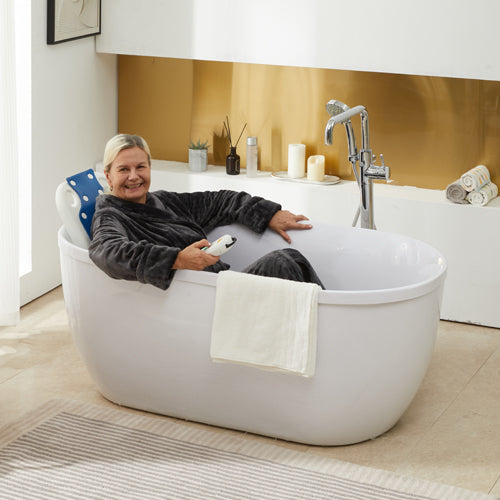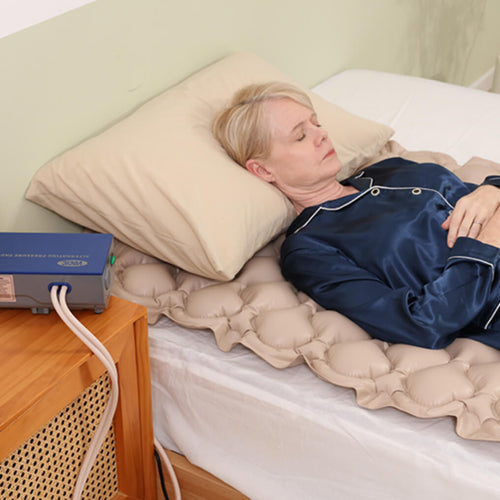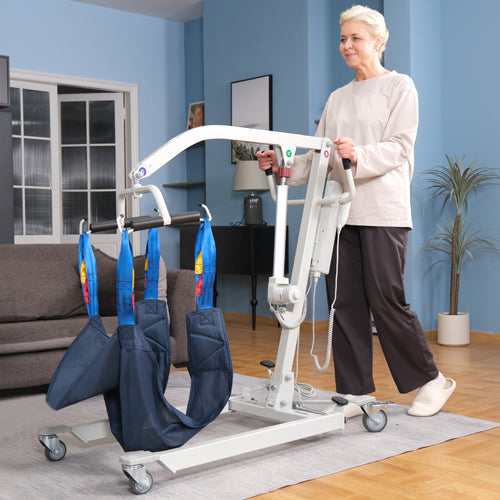The healing process of hip replacement is quite time-consuming. You need proper care and support to fully recover. After the operation, the main goal is to restore your independence. Healing among individuals differs based on their age and health conditions. How long is the recovery from hip replacement? Let’s discuss in detail.
What to Expect During the Early Stages of Recovery?
The initial days post-surgical are important. You may have to spend 2-4 days in the hospital after performing the surgery. The doctor will monitor your healing of the incision. The physical therapist may suggest that you perform simple exercises. Moving your ankles and lifting your legs lightly will prevent stiffness.
Normally, you experience some pain or even swelling around the hip. Drugs will aid in controlling the pain. The majority of the patients can walk several steps with support even the day after surgery.
At home, it is necessary to adhere to the physical therapy plan. Get around with the help of a walker or rollator. Do not bend the hip too much or turn the leg inwards. These precautions keep your new joint in its place and keep it healing. Light exercises help in avoiding blood clots and aid in more rapid healing.
Timeline of Recovery From Hip Replacement
How Long Is the Recovery from Hip Replacement?
Here’s a complete timeline to help you understand the phases:
Weeks 1–3
The initial few weeks will involve simple tasks. Your muscles are still not strong enough. Suffering and swellings are typical, yet they get better every week. You will be introduced to some exercises by your physical therapist. It will strengthen your hips and legs.
Week 4–6
By this point, you will be able to see a gradual improvement. Suffering is less, and you will walk further without receiving a lot of help. Some individuals may initiate the use of a rollator or a lighter mobility aid.
Weeks 7-12
In this period, most people can walk without pain and more comfortably. It’s normal to feel your joints stronger and more flexible. When walking outside, there is still a chance you can use a rollator to stay safe. It’s best to use a roller walker on an uneven surface.
3-6 Months and Beyond
By six months of age, most patients are almost normal. You will be able to practice different activities like long walks or swimming. It can take a year to be completely healed and make your muscles strong.

How Mobility Aids Help in Recovery?
Honestly speaking, using mobility aids can help in hip replacement recovery. You will be able to move freely. Besides, utilizing walkers or rollators prevents sudden falls. Doctors also suggest using them during the recovery phase.
After hip replacement surgery, mobility aids help patients regain independence step by step. For example, walkers or rollators can be used in the recovery stage to support weight while walking. They ensure the hip joint is protected. As strength and balance improve, patients can gradually transition to using a cane. Using mobility aids also makes it easier to attend a doctor's follow-up visit. Mobility aids also help to move around the house safely.
Having a reliable rollator that is easy to use inside and outside makes a big difference. It allows you to stay mobile while offering a comfortable seat to rest during the time of break.
Choosing the Right Walker for Post-Surgery Recovery
The right walking aid can make your recovery easier and more comfortable. You have to choose a walker that provides balance and stability according to your needs. Confused between a standard and a rollator walker? For easier movement, it’s best to buy a rollator walker.
To maintain correct posture and reduce pain, buy a walker with adjustable height. You need to go lightweight and comfortable for easier handling. Get a walker with a seat or storage if you need to rest or carry items.
The first one is the VOCIC Z51 2-in-1 Rollator Walker and Transport Chair. It is quite stable and safe on any surface. It is comfortable to maneuver and feels balanced even on uneven surfaces. It comes with a comfortable chair. It can be folded easily to be transported or stored in the car trunk.
You also used the VOCIC Z63 Rollator Walker. It comes with big rubber wheels to offer more stability. Its huge rubber wheels move easily. You can move smoothly even over rough or hilly grounds. It does not need to be charged and therefore does not need a lot of maintenance and worry.

Tips for a Smooth Recovery From Hip Replacement
The following are a few simple tips that can make the healing process smoother and safer.
Stick to Your Physical Therapy
It is important to exercise regularly in order to restore mobility and strength. Consistent movement also helps reduce stiffness. It speeds up overall recovery. Over time, you’ll regain confidence in walking and performing daily activities independently.
Assist with Mobility Aids
Prior to purchasing a mobility aid, you may consult your therapist. It will make your recovery fast and enable you to move anywhere. Falls can be prevented by walking with a rollator or walker to take pressure off your new hip.
Stay Hydrated and Avoid High-Impact Activities
Hydration will decrease swelling and assist in recovery.
Running and jumping must be avoided. Your new joint may be damaged by it. Stay in a home environment to hasten the recovery phase. Remove all obstacles and rugs at home to prevent tripping.
Take Your Time and Listen to Your Body
It is important not to rush your recovery. Take breaks and listen to your body. Your doctor can identify your progress and adjust your treatment plan with frequent checkups.
Conclusion
Hope you got a complete idea about how long it takes to recover from a hip replacement. To completely recover from it, you need time. You can regain independence if you choose the right mobility aid, like rollator walkers from VOCIC. Most patients recover significantly within 3 to 6 months. But full recovery can take up to a year.
FAQs
What can you never do after a hip replacement?
You have to avoid activities like crossing your legs or bending your hip 90 degrees. Because twisting the log inward can dislocate the new joint.
What is the hardest part of hip replacement recovery?
The first few weeks are the hardest part after recovery. You have to utilize a support aid like a rollator walker to speed up the recovery. Besides, staying consistent with the exercise can also help.
How long do you use a walker after hip replacement?
It’s best to use a walker or rollator for 4-6 weeks. After that, you can switch to a cane. Ask your doctor before making any decisions.
How soon does rehabilitation start after hip replacement?
The recovery starts within a few days after you perform the hip surgery. You have to start following the exercise and suggestions of your therapists to speed up the recovery.









